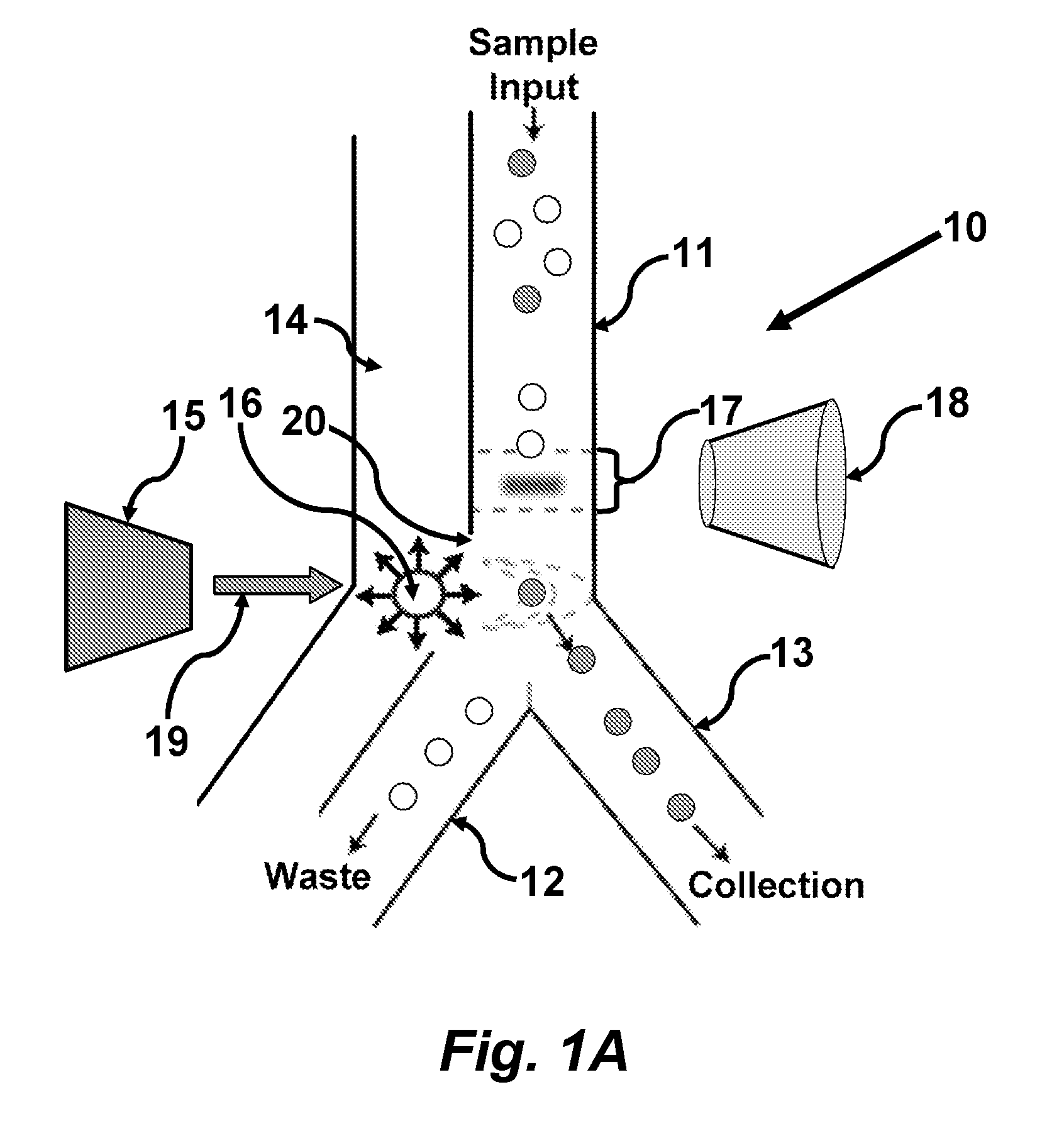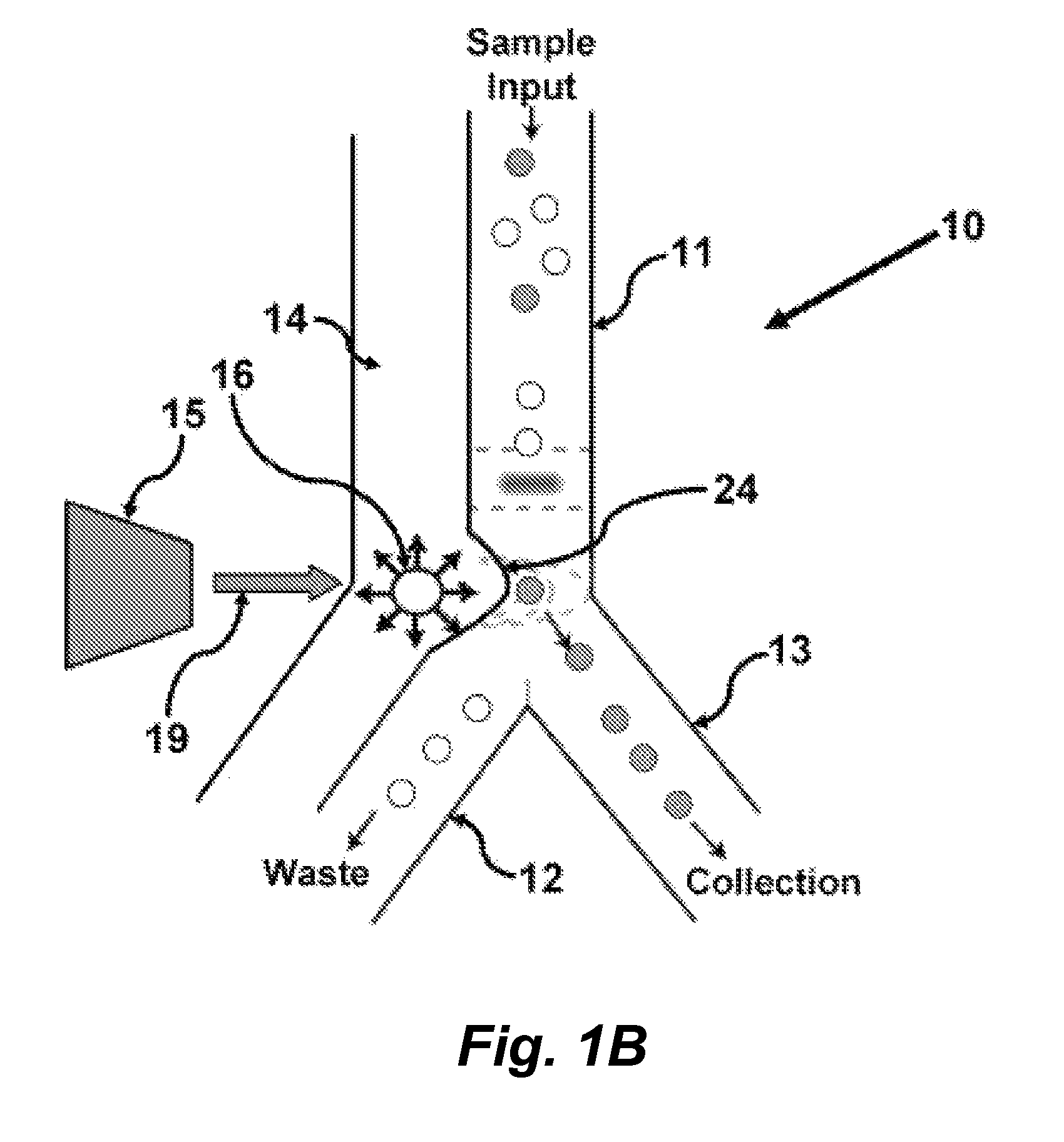Pulsed laser triggered high speed microfluidic switch and applications in fluorescent activated cell sorting
a high-speed, microfluidic switch technology, applied in the field of microfluidics, can solve the problems of droplet-based sorting system, difficult to prevent cell loss during transfer, operator's and samples contamination, etc., and achieve the effect of excellent compatibility
- Summary
- Abstract
- Description
- Claims
- Application Information
AI Technical Summary
Benefits of technology
Problems solved by technology
Method used
Image
Examples
example 1
Performance of a μFACS Using a Pulsed Laser Switch
[0080]FIGS. 15A and 15B schematically illustrate a pulsed laser triggered fluorescence activated microfluidic cell sorter incorporating the switching device described herein. The device consists of a main microchannel (or sample channel) with two outlets, collection and waste. Using sheath flow focusing, the input particles are focused slightly off the centerline of the main channel and go into the waste channel. Fluorescent particles are detected as they flow through the top of the Y junction. This triggers a laser pulse focused through a high N.A. objective lens into the pulsed channel running in parallel with the main channel. The focused laser pulse induces optical breakdown of the liquid medium and the subsequent cavitation bubble. As the bubble expands, the surrounding liquid is pushed away and squeezed through the nozzle opening into the main channel. This liquid jet deflects the particle flow into the collection channel.
[0081...
PUM
| Property | Measurement | Unit |
|---|---|---|
| switching time | aaaaa | aaaaa |
| switching time | aaaaa | aaaaa |
| switching time | aaaaa | aaaaa |
Abstract
Description
Claims
Application Information
 Login to View More
Login to View More - R&D
- Intellectual Property
- Life Sciences
- Materials
- Tech Scout
- Unparalleled Data Quality
- Higher Quality Content
- 60% Fewer Hallucinations
Browse by: Latest US Patents, China's latest patents, Technical Efficacy Thesaurus, Application Domain, Technology Topic, Popular Technical Reports.
© 2025 PatSnap. All rights reserved.Legal|Privacy policy|Modern Slavery Act Transparency Statement|Sitemap|About US| Contact US: help@patsnap.com



